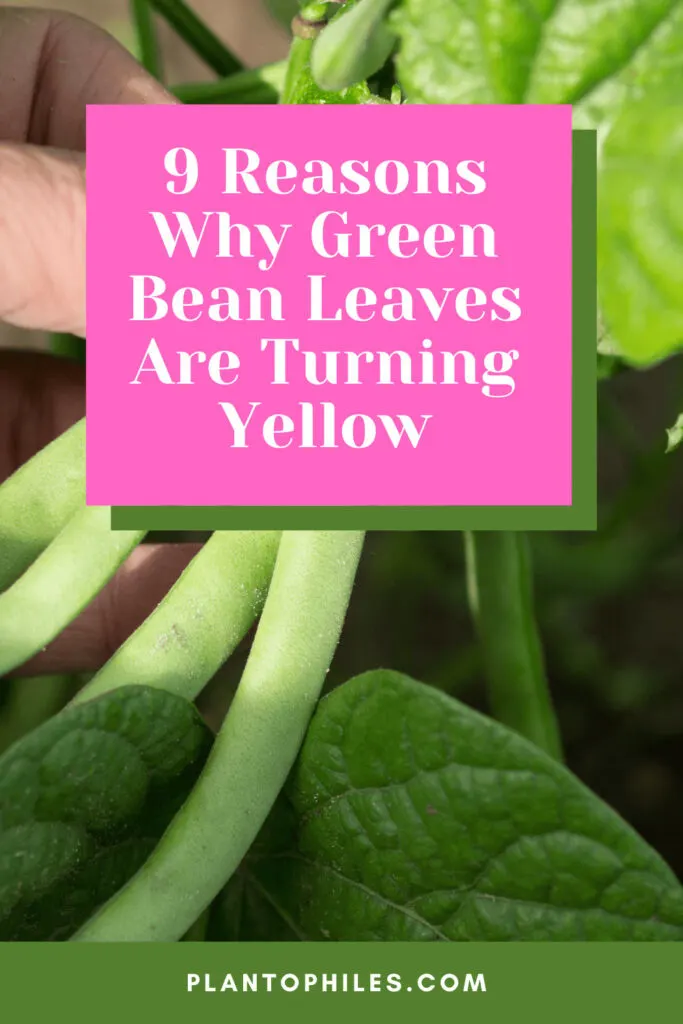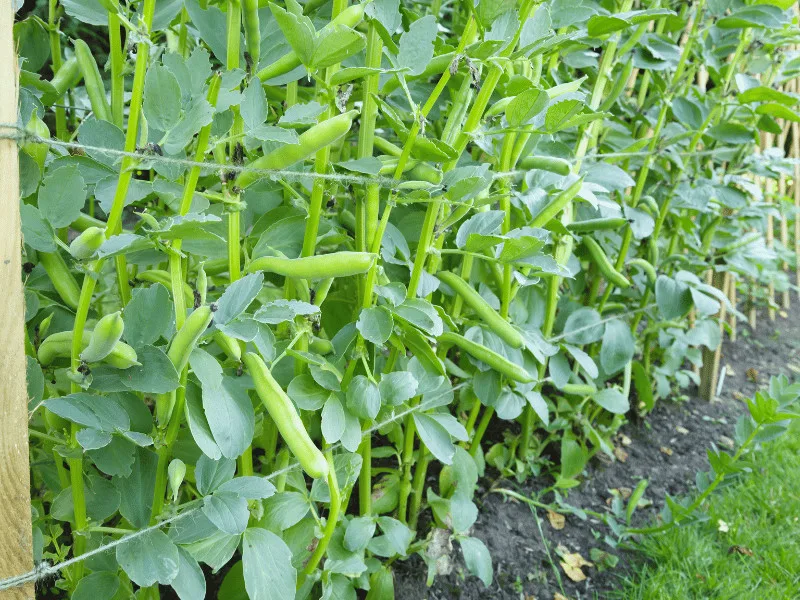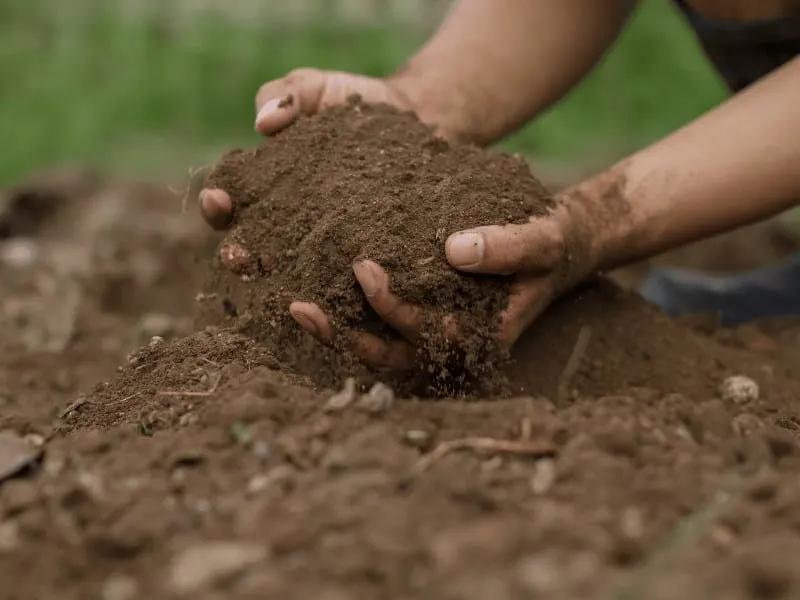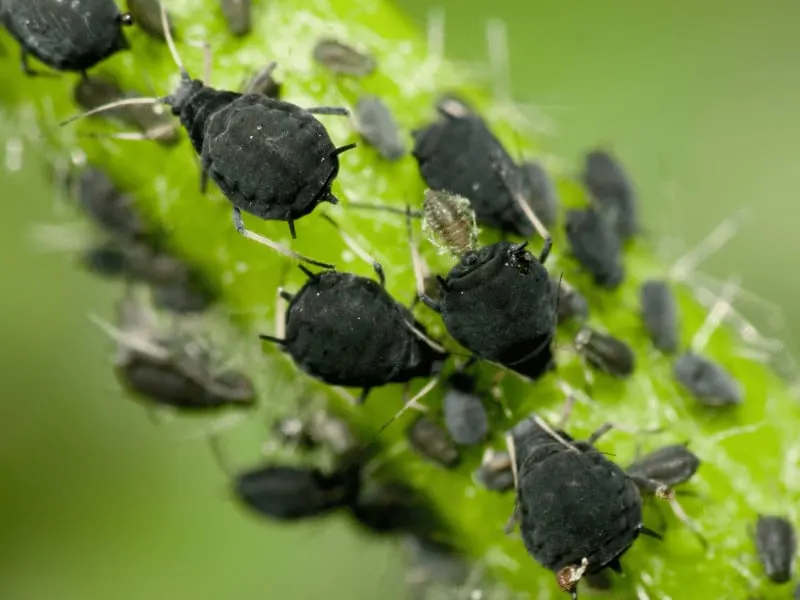Why are my green bean leaves turning yellow? Bean plants are considered the precursors of the hot season because they offer the first vegetable crops while producing pods throughout the summer.
For the longest time, I couldn’t figure out why my bean plants started to turn yellow. I later found out that a plethora of reasons was the issue.
When leaves turn yellow on plants, mostly the care is not on point.
Table of Contents
Green Bean Leaves Turning Yellow
Green bean leaves are turning yellow because of lighting issues, incorrect soil, inadequate nutrient supply, water issues, damaged roots, fungal infections, pest infestations, temperature stress, disease, and virus.

9 Reasons Bean Leaves Turning Yellow
1. Lighting issues
Bean plants require 8 hours of direct sunlight per day.
Anything less and the leaves start to yellow. The reason is that bean plants cannot produce sufficient chlorophyll.
A lack of sun may also prevent rainwater from drying on leaves, resulting in fungal infections.
Remedy:
Plant bean plants in a place where they get 8 hours of direct sun per day and lots of indirect light during the rest of the day. Suitable locations are open areas and raised beds. South-facing walls and beds are preferred.
Never place it in a dark location, as the water stays in the soil too long.

Related: South-Facing Gardens
2. Incorrect soil
Bean plants need organic soil rich in nutrients. In addition, the soil needs to be well-draining. Aim for a pH level between 6-7.
The first step is to inspect the planting area, as your soil could be the primary cause of yellowing on bean plants.
If you have alkaline soil, it can lead to iron chlorosis.
You can test for that with a soil test or by spraying vinegar onto the soil. The soil is toxic if it produces bubbles upon applying the vinegar.
Remedy:
Use fertile organic soil and top it up with mulch. This helps to add essential nutrients. Ensure proper drainage by mixing it with perlite.

3. Inadequate nutrient supply
Too much or too little fertilizer leads to unhealthy-looking leaves in bean plants.
Bean plants need balanced fertilizer. You can use slow-release fertilizer or liquid fertilizer. It can be organic or synthetic. It is essential that the NPK ratio is balanced or adds what is missing in the soil.
Nitrogen, phosphorus, potassium, and NPK are vital to plant growth macronutrients. Test the soil at the beginning of the growing season. Make sure essential macronutrients and micronutrients are present. If that is not the case, supplement the ground.
According to Clemson University, micronutrients such as zinc (Zn), manganese (Mn), and iron (Fe) are equally essential.
A lack of nitrogen can end up causing plants and leaves to shift light green or yellow, along with inadequate harvesting.
The same is true for manganese deficiency, which tends to cause older leaves to be yellow and brown spots to appear.
Remedy:
Use 1/2 cup of fertilizer per 10 square feet. Fertilize every 4 weeks in the growing season. The growing season is spring and summer.
5% nitrogen, 10% phosphorus, and 10% potassium is the ideal ratio for beans.
Related: Best Fertilizers for Bean Plants
4. Water issues
Bean plants need 2 inches of water per square meter, according to Old Farmers Almanac.
Too much or not enough water. Maintain a balanced amount of water to keep the soil moist.
Too much water leads to soggy soil. This results in yellow leaves.
Underwatering puts stress on plants. Especially in combination with hot weather, the leaves will dry out, wilt, and turn yellow.
Remedy:
Stick to a regular watering schedule in addition to natural rainfall. Adjust your watering according to the weather. In warm and hot weather, bean plants need more watering. If temperatures are cold or there is a lot of rainfall, little to no watering might be necessary.
If you grow beans in pots, use pots with drainage holes.
5. Damaged roots
Soggy soil suffocates the roots. Root rot and leaf yellowing go hand in hand. Soil that does not within 1-3 days and stays humid can lead to rotting roots. Airflow to the roots is essential. When the soil is soggy, roots can no longer be oxygenated.
Remedy:
Airflow is very important. In addition, well-draining soil needs to be used. When the roots are mushy, the best is to take the bean plant out of the pot and soil and cut off the damaged roots. Rinse the healthy roots under running water. Exchange the soil around the plant.
6. Fungal infections
Several fungal infections affect bean plant leaves:
- Anthracnose: Small brown to black spots on leaves that increase in size
- Fusarium wilt: Wilting and yellowing leaves
- Powdery mildew: Grey and white coating on plant leaves
- Rust: Yellow and orange spots.
Remedy:
One of the best remedies for fungal infections, based on my experience, is fungicides. Copper and bacterial fungicides work well. Apply them over several weeks until the fungus disappears. In addition, remove infected leaves.
If the infection worsens, remove and discard the plant to prevent the spreading of the disease. For that reason spreading plants several inches apart is essential.
7. Pest infestations
Aphids, mites, and bean beetles are common pests infecting plants. They suck the plant sap out of the leaves. The leaves turn yellow, wilt, and die.

Remedy:
Use horticultural soap and spray. Neem oil is great as a preventative measure to protect plants from pest infestations.
Once plants are infested, I always try to use organic solutions first. What is working great for me are beneficial nematodes. Good bugs if you will fight off the bad bugs. Depending on the pest, choose a beneficial nematode that is suited to fight off the pest.
Use systemic insecticides if you cannot eliminate pests on bean plants only as a last resort. They almost always work, but you must be careful when applying them. You do not want to harm the ecosystem.
8. Temperature stress
Scorching hot and cold climates are detrimental to your plant’s health. Bean plants get stressed and produce yellow leaves in dry, hot climates. The same goes for cold drafts and cold temperatures.
Remedy:
The ideal temperature for beans is 65°F to 85°F (18-29°C). Provide shade in high temperatures by using a shade cloth. Water more often during hot weather. Use mulch to keep the soil cool. Make sure you fertilize sufficiently. Healthier bean plants are stronger and can withstand extreme temperatures better.
For cold temperatures, use a greenhouse. Plant later in the season, and make sure you choose a variety suitable for your USDA hardiness zone that you are in.
9. Disease and Virus
If your Bean plants still have yellow leaves, the possible culprit is a disease. There are still other possible reasons.
The most prevalent are the mosaic virus and blight.
Blight
When a pathogen is a primary reason for leaves yellowing, you’ll see water sitting on leaves or dry brown leaf edges.
Blight spreads throughout the leaf, triggering the leaves to perish and then fall off.
The plant cannot photosynthesize anymore. Yellowing appears on bean leaves.
This condition causes circular yellow spots on the leaf. They gradually mix until the whole leaf becomes yellow.
This bacterium resides in the soil or travels through diseased seeds.
Remedy:
Pick and plant immune bean seeds. Apply fungicide as soon as symptoms occur to help stop the disease from propagating. After harvesting, erase and demolish all garden debris and practice crop rotation.
Mosaic Virus
A viral infection can also initiate yellow leaves. The Bean mosaic virus is the most common virus for bean plants.
The first signs are multicolored patches on the leaves of the plants. They are followed by yellow leaves and, later, brown leaves.
If your bush or pole beans have yellow leaves, it could be due to a virus. There is, however, no remedy for the mosaic virus.
Decreased nutritional concentrations and herbicide injury can cause viral plant infections, but infected bean plant seeds most likely cause them.
Remedy:
No remedy. Do not store seeds that may contain the virus. Discard any plant suspected of carrying the Mosaic Virus immediately. It travels rapidly to other plants and infects them. Purchase only disease-free seed from a trusted company and inspect the packaging to ensure this.
Rotate the Bean crop yearly, particularly if you’ve had an infection. It is essential to control aphids to avoid viral spread. They often carry the virus.
Frequently Asked Questions
Does overwatering lead to yellow leaves in bean plants?
Overwatering is the leading cause of yellow leaves in bean plants. When the plant becomes submerged in water, it leads to root rot which further causes yellow leaves. Therefore, you must water it when it needs to be watered.
How can I avoid spreading viruses and diseases causing yellow leaves in bean plants?
To avoid disease and viruses, rotate your plants every year. Avoid using old seeds as they might have an infection. If the infection is detected, destroy the plant, as there is no cure.
I hope my guide about the nine reasons green bean leaves turn yellow was helpful. It is essential to know the leading causes and read about the remedies. You have been growing these vegetables for months, and the season is over quickly. The last thing you want is unhealthy bean plants.

Daniel has been a plant enthusiast for over 20 years. He owns hundreds of houseplants and prepares for the chili growing seasons yearly with great anticipation. His favorite plants are plant species in the Araceae family, such as Monstera, Philodendron, and Anthurium. He also loves gardening and is growing hot peppers, tomatoes, and many more vegetables.


